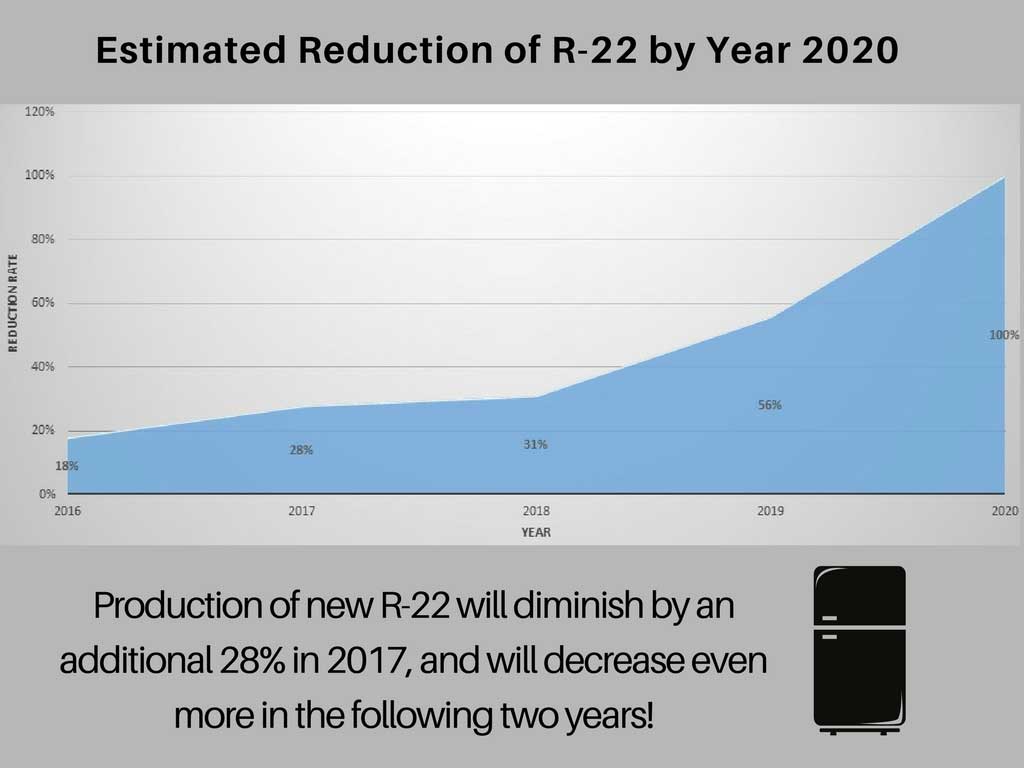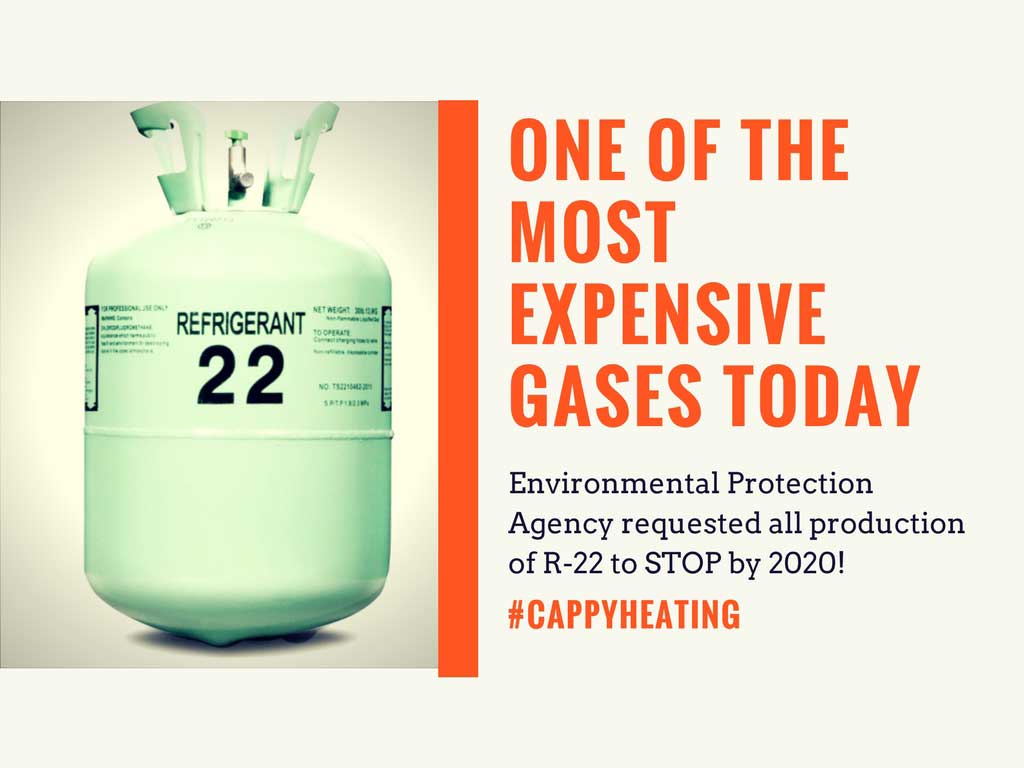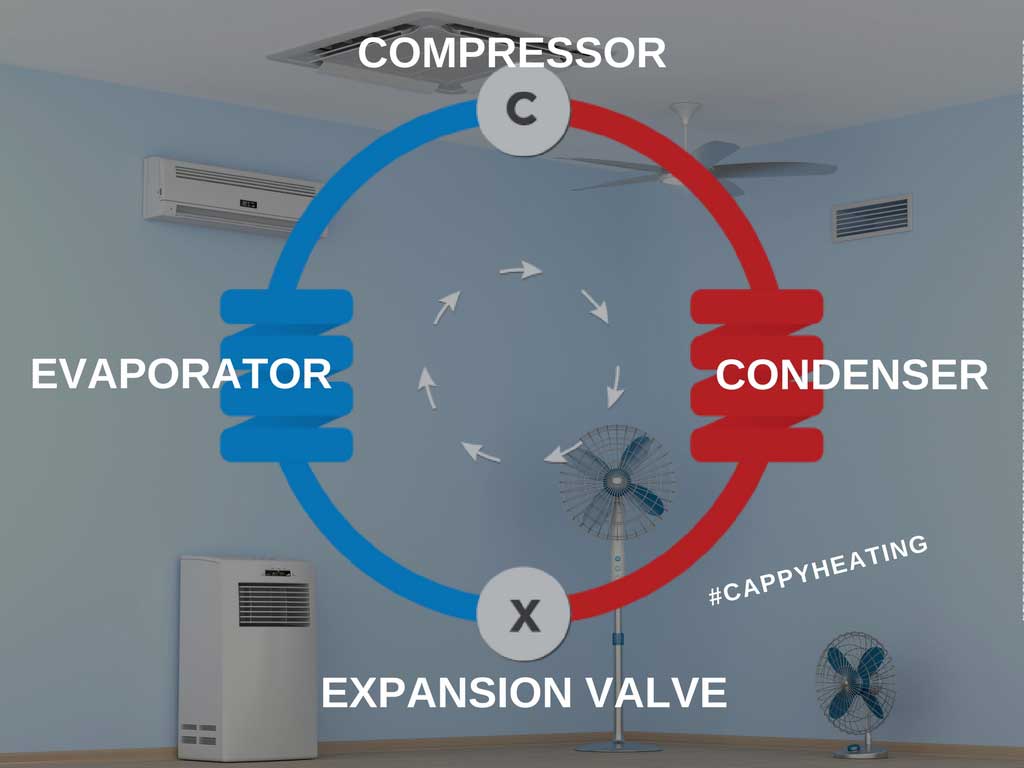When it’s boiling hot outdoors, it’s time to cool the temperature inside. If you’ve had to call a repair service to check the coolant levels, you’ll probably go into sticker shock if you have to replace it. That’s due to the fact that the most commonly used coolant, R-22 refrigerant or Freon, is in short supply sending prices sky high.

In view of its effect on the ozone, the Environmental Protection Agency requested all production of R-22 refrigerant to stop by 2020. Production of new R-22 will diminish by an additional 28% in 2017, and will decrease even more the following two years.

What does refrigerant cost now?
At this moment, R-22 refrigerant is one of the most expensive gases on the market. The cost for a standard tank of R-22 was around $450 in 2015. In 2016, a similar 30-pound tank is over $500-$600. It is the sharpest price increase we’ve seen!
As of the end of the first quarter, R-22 costs have increased to around $22 per pound. R-22 refrigerants remain the most broadly utilized refrigerants and repair companies are clearly benefiting from the price increases associated with the ongoing phase out activity.
If I Already Upgraded Do I Need to Worry ?
It doesn’t necessarily mean that consumers who haven’t already switched to units using the replacement coolant R410Awill need to buy new units immediately. That’s because Freon circulates within a closed system, so it doesn’t get used up by air conditioning units like cars using gasoline.

It can, however, leak out of the system, and leaks are virtually inevitable in older units. That is the reason it’s critical to have your air conditioning serviced every year.
If your air conditioning unit needs Freon, it’s good to keep in mind that it could have a significant leak if it needs more than a pound or two. And, it’s a good idea to request that your technician to use a scale to guarantee the amount of Freon being utilized is precise. Just a quarter pound can have a major difference in your bill.
Here are the following five signs that it’s time to consider replacing your AC system:

1) Your older R-22 system is leaking refrigerant
As mentioned above, R-22 systems and refrigerants are being phased out for environmental reasons, so R-22 refrigerant is getting harder to find. It also costs three times as much as the R-410A refrigerant used in newer systems.
2) Electric bills appear to be higher than normal
Faulty air conditioning systems use more energy. While replacing an older system involves an initial expenditure, some of today’s energy efficient systems have a payback period of as few as four years.
3) Repeat calls on your HVAC technician
If you’re calling your service provider more than once or twice this summer to fix a problem, it’s time to think about whether your system is at the end of its life.
4) Your system is at least 15 years old
The average system that’s properly maintained should last around 15 to 20 years In case you’re constantly having issues and you’ve got an older system, it’s probably time to invest in a new one before you have a complete breakdown.
5) It doesn’t work!
Yes, sometimes it’s truly that simple, when nothing brings it back to life, it has probably reached its life expectancy.
While there are some less expensive R-22 options available, frequently referred to as “drop-in” replacement refrigerants, they aren’t generally a decent choice. Recharging older air conditioners with these alternative refrigerants may actually damage the system and/or potentially void your manufacturer’s warranty.
So start investigating options for a system upgrade if you’re still using R-22 so you don’t wind up attempting to settle on a quick choice when your air conditioner stops working during extreme temperatures.
